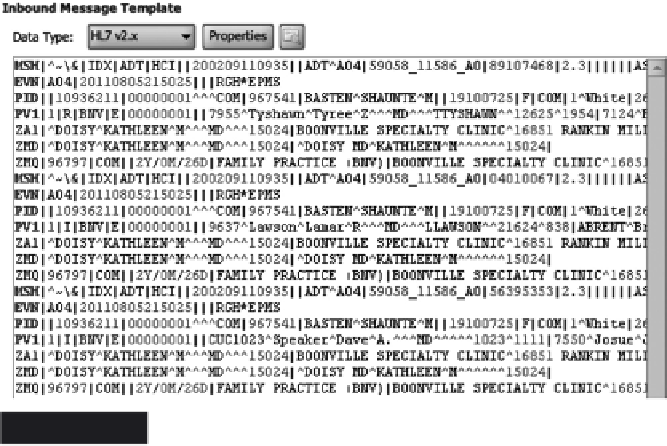Biomedical Engineering Reference
In-Depth Information
Figure 20.5
Screenshot of Mirth loading template
for the transforms. The Message Builder interface takes an element from
the inbound message and puts it in an element in the outbound, with the
ability to do string replacement on the element. The Mapper interface is
used to map elements to a variable for use later. For analytics, this is
useful because fi elds can be mapped to variables that can then be mapped
to database statements. For XML messages, there is the option of
executing an XSLT script. Finally, custom Javascript code can be written
to perform more complex transformations.
Once the data are transformed, they need to be inserted into the
analytical database. If using a relational database, such as MySQL [6],
the database writer can be used to insert the data. After inputting the
driver and connection information, Mirth can generate sample SQL
insert statements. Afterwards, variables mapped during the transform
can be used with the SQL insert. If a database is not listed, Mirth does
allow the installation of custom database drivers. However, for non-
traditional NoSQL databases such as CouchDB [7], this database
connection mechanism will not work. Mirth does support the same
variety of connection types that the input connector supports and thus,
either Javascript or HTTP can be used to communicate with a NoSQL
database.





Search WWH ::

Custom Search